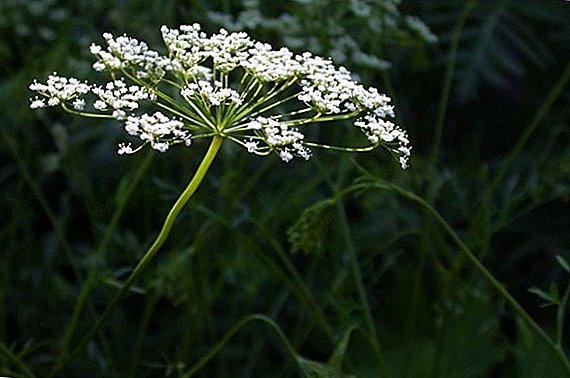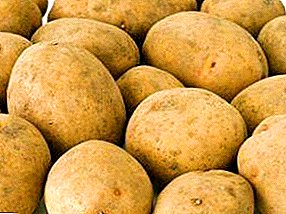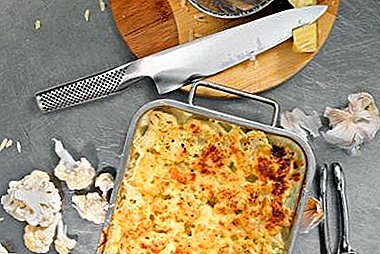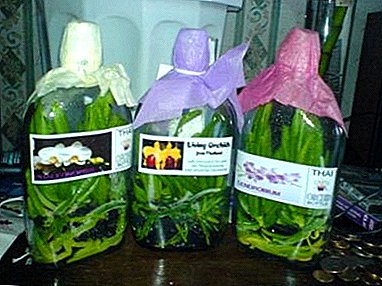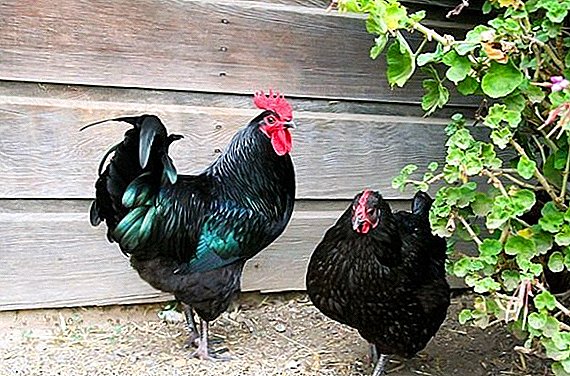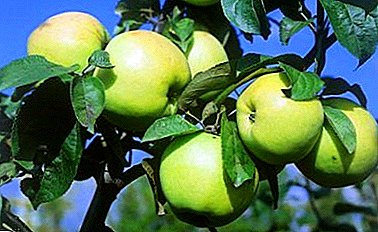
With the onset of autumn a large variety of grapes appears on the shelves of stores. The most popular are table varieties, but not all of them can boast of their long shelf life. However, from varieties that are stored for a long time, you can select such grapes as "December". In this article we will look at the main characteristics of this grape variety, features of planting and caring for them.
About breeding
The variety "December" is relatively young and has Moldovan roots. It was bred by the Moldavian NIIViv in 1961. This variety would be obtained after crossing varieties "Villard Blanc" and "Koarna nyagre" (better known as "Moldavian").

A big misconception is the fact that the variety got its name due to ripening in December. This is not so: grapes, depending on climatic conditions, can ripen both in late September and in October, and in some regions even in November. A feature of the variety "December" is a long period of storage of the crop.
Biological description
Any variety has its own biological indicators. Let's look at how this grape differs from other varieties.
Bushes and shoots
Young shoots have a light golden color, like the first leaves that appear on them. The leaves have a triangular oval shape of medium size. The incision has a slight character, and the leaf size is on average 14 x 16 cm. If you look at the foliage in clear weather, it shows a dark green shade.
Familiarize yourself with the cultivation of such technical grape varieties as Krasnostop Zolotovsky, Alpha, Isabella, Chardonnay, Cabernet Sauvignon, Riesling.
On sunny days, young shoots become purple-wine color. The growth power of this crop is medium, and the vine matures quite well.
Video: December grapes, the main characteristics.
Clusters and berries
"December" grapes have high yields.. The density of clusters is average, they are clearly visible from below. Gardeners characterize the size of the cluster as medium or large, as in different conditions their parameters may vary. Mass bunch can be from 300 to 800
Did you know? The grapes were repeatedly on the verge of extinction, but its population was regularly restored. For example, during the conquests of Tamerlane, or, as he was called, Lame Timur, the vineyards were repeatedly destroyed.
The density of the berries is quite high. The berries are oval in shape, of medium size (16 x 23 mm, and the weight does not exceed 4 g), and their color has a dark blue or dark purple hue with a wax coating. The berries are quite dense in structure and contain 2-3 seeds.
The taste of grapes is not particularly allocated. However, it has a rather pleasant taste: the berries are juicy and soft, and the skin, although it has a dense structure, is not palpable when consumed. The sugar content of this grape is 16-18%, and the acidity is only 8-9 g / l. Tasters rated this culture at 8.1 points out of 10.
You will probably be interested to learn more about the best varieties of early, nutmeg, white, pink, black, table, unopened, cold-resistant and technical grapes.
Other characteristics of the variety
No less important characteristics of the grape crop is its resistance to frost and pests, the rate of ripening of the crop and its volume.

Cold hardiness and disease resistance
This variety has a rather high resistance to various pests, for example, such as a spider mite or leafworm, as well as gray rot of berries and fungal diseases, such as mildew. In the process of ripening the clusters are not affected by bees or hornets.
"December" grapes tolerate frost well with a decrease in temperature to -27 ° C. Frost-resistant buds do not require additional shelter, which allows the use of this variety for industrial cultivation. The death of eyes after wintering does not exceed 12%.
The rate of maturation and yield
"December" refers to table grape varieties with high yields of medium ripening. The term of ripening of the bunch is from 160 to 165 days, starting from the beginning of the swelling of the kidneys. Harvest on average starting from the end of September, and its volume from one bush - from 14 to 16 kg.
Fruiting the grapes begins as early as 3 years after planting, and the maximum yield can be collected already from the five-year bushes. During this period, from 1 hectare to 160-170 c.
Purpose
This type is intended for fresh consumption. However, table grapes, which include "December", can be used to make juice, wine or other beverages.
Did you know? The term "ampelotherapy" means the treatment of grapes, while using not only berries, but also the vine, wood, leaves and other parts of it.The nutritional value of this variety is due to the high caloric content of the juice and the vitamins in its composition. Healing properties are associated with a high content of grape sugar, iron, vitamins and organic acids, which are easily absorbed by the body.

Growing conditions
The grapes of this variety are not highly demanding for growing conditions. The ideal regions for "December" are Moldova, the south of Ukraine, as well as the North Caucasus.
The soil for growing grapes is better to choose rich in humus. Such a soft land combined with shallow groundwater will provide a high degree of yield. At the same time, the groundwater should be at a depth of not less than 2.5 meters.
The degree of illumination is also important - preference should be given to areas with good lighting, where the shadow of trees or buildings does not fall. Also, this grape must be protected from exposure to cold winds.
Landing rules and secrets
For planting it is better to choose seedlings with a well-developed root system. However, you can use grafted seedlings, which check the degree of accretion.
Important! Choose seedlings with three or more roots, which are evenly distributed throughout the base, then a good survival rate of grapes is provided.The correctness of planting guarantees 80% survival rate of the culture. With the choice of the site and the soil we have already figured out earlier, now we will find out the main secrets of planting seedlings.
Planting "December" can do in the early spring before germination of seedlings or in autumn before the onset of frost. Grapes are planted in holes 80 by 80 cm in size and 80 cm deep. In order for the future bush to grow evenly, a peg is driven in the center of the hole, which will serve as a support for the young seedling. 
At the bottom of the hole is lined with a layer of drainage of gravel thickness of 8-10 cm, and the top is covered with earth and watered abundantly. The use of mineral and organic fertilizers contribute to a better survival of the grapes. Then, fertile soil is poured in the form of a mound, and a seedling is placed on top and the roots are straightened with gentle movements.
It will be useful for you to read about whether to care for grapes during flowering, how to grow grapes from chubuk and bones, how to transplant and not damage the grapes, when and how to collect it, and also how to graft and grape properly.
Now you can fill the hole with earth, while leaving a sapling with 3 eyes above the surface. Well compacted ground, it is poured abundantly with water, and to prevent the rapid evaporation of moisture lay a layer of mulch.
Care Tips
Before the vine starts to give its first fruits, it is necessary to take care of it for a long time. After planting and especially during the period of germination, the vine crop needs regular watering, removal of weeds that appear around the vine, as well as loosening the soil.
We advise you to read about how to prevent and combat diseases and pests of grapes.
In spring and autumn, pruning is done and the vine is shaped. If necessary, his shoots tied to the supports with the help of twine made from natural materials. In the process of growth to shape the young shoots can break off and thus regulate the direction of growth.
Important! A week before flowering, fruitful shoots pinch, which allows you to redirect the distribution of nutrients to the formation of future fruits.To strengthen the root system, each spring produces katarovka of thin roots, which sprouted at a depth of not more than 20 cm. Also, do not forget about regular feeding with both mineral fertilizers and organic fertilizers. A continuous crop check for pests or diseases will help protect your grapes and protect the future harvest. When identifying parasitic organisms or fungi, it is necessary to immediately treat the culture.

Advantages and disadvantages
Many gardeners appreciate December grape varieties for:
- good yield, which is distinguished by its stability;
- beautiful aesthetic appearance of the clusters and its excellent taste;
- excellent survival rate and a good growth rate of the vine;
- good frost resistance that does not require the shelter of the vine for the winter period;
- high resistance to pests and diseases;
- high duration of storage of the harvest (when stored in the refrigerator, fruits can retain their taste and appearance for up to 3-4 months);
- a rich assortment of nutrients that are especially needed during the cold season;
- possibility of use as scenery for various dishes.
The disadvantages include low transportability and the possibility of eating the crop by birds.
Important! When rough and prolonged transportation of berries can fall off from the bunch, which spoils the presentation of the grapes. This is due to poor fixation of the berries to the stem.
The grapes "December" is distinguished by its unpretentiousness, good survival rate and high yield. Such characteristics make it attractive not only for experienced gardeners and winemakers, but also for beginners. It will be a great addition to any vineyard or garden.

Reviews from the network
Sincerely, Oleg Chaika




